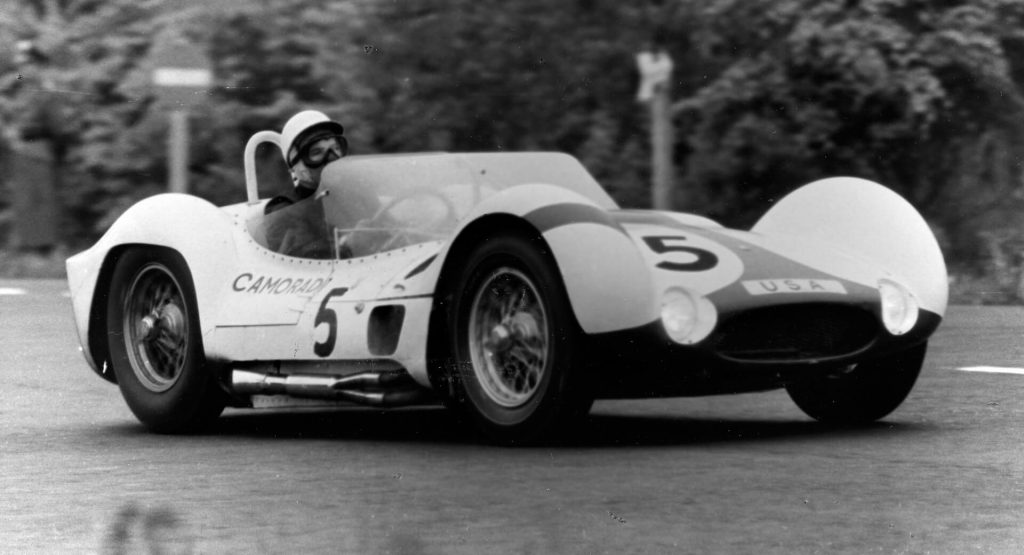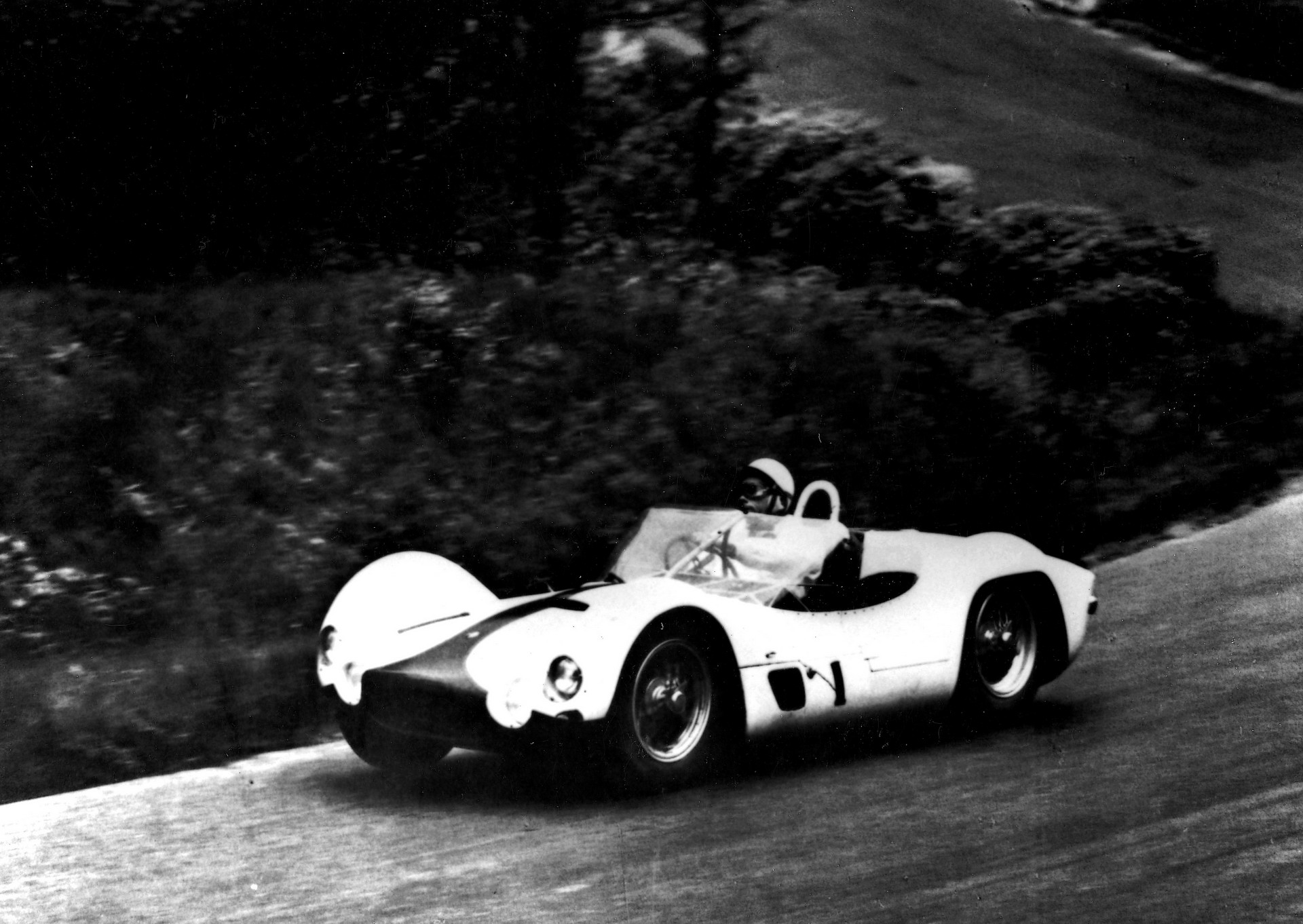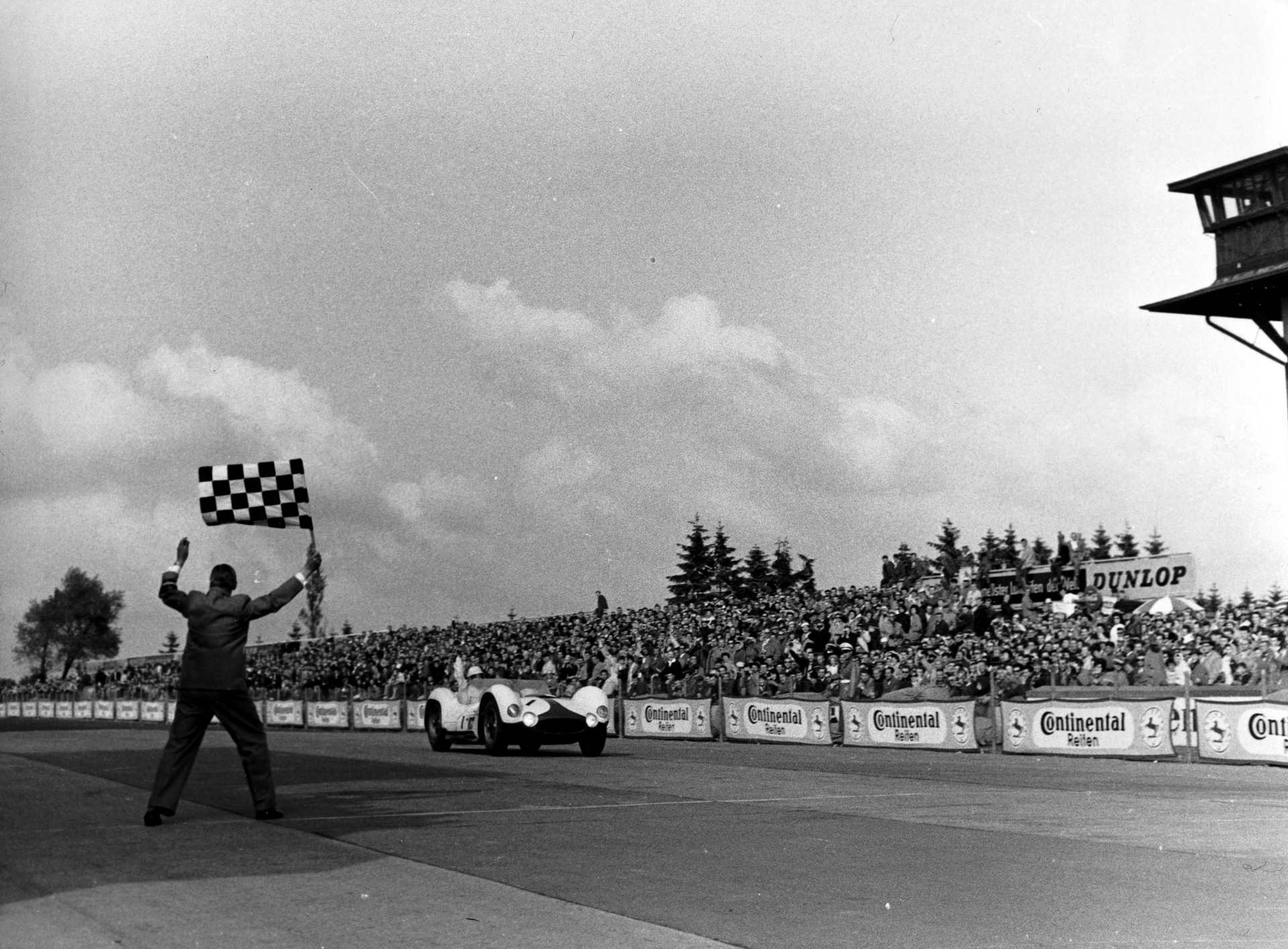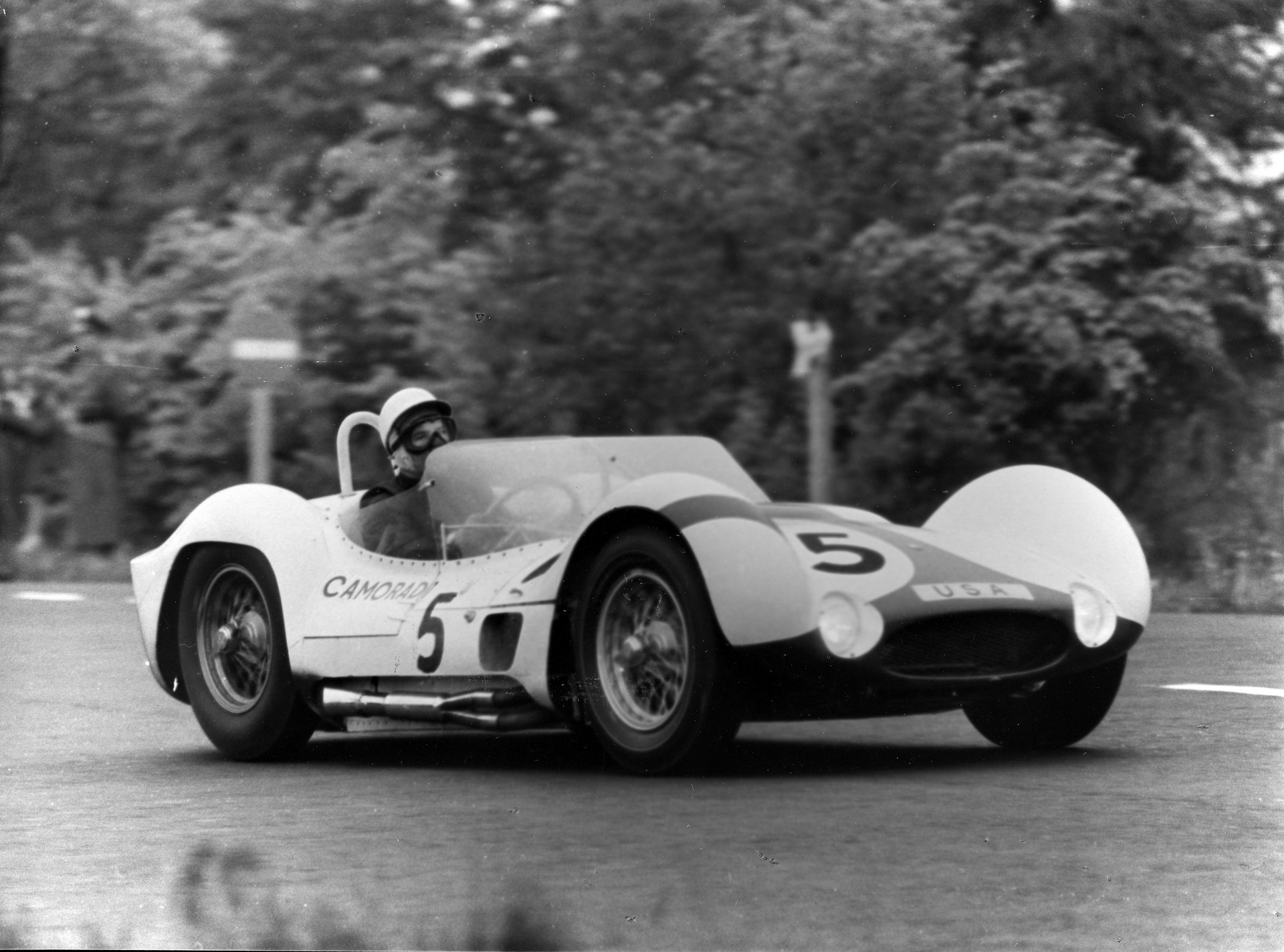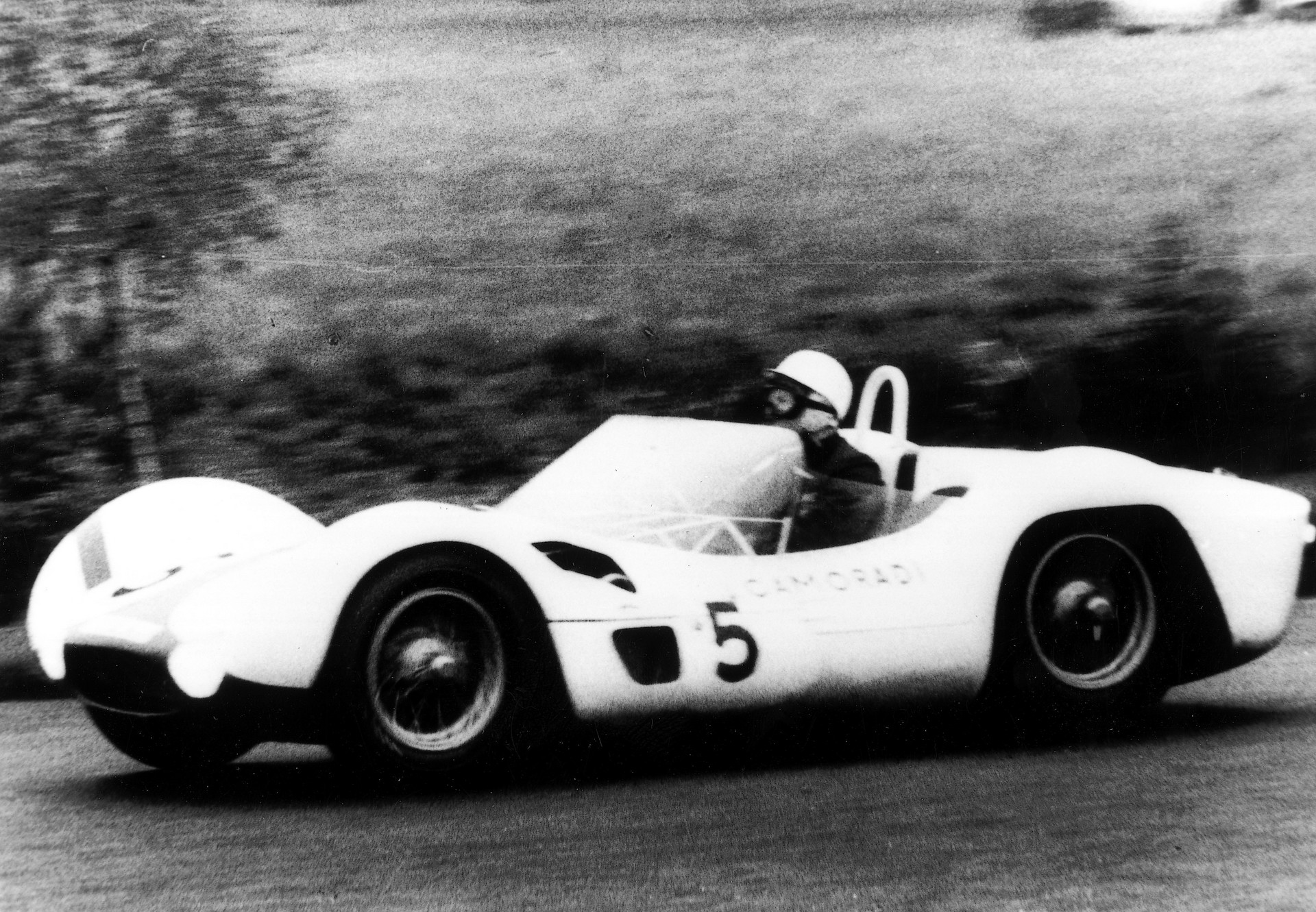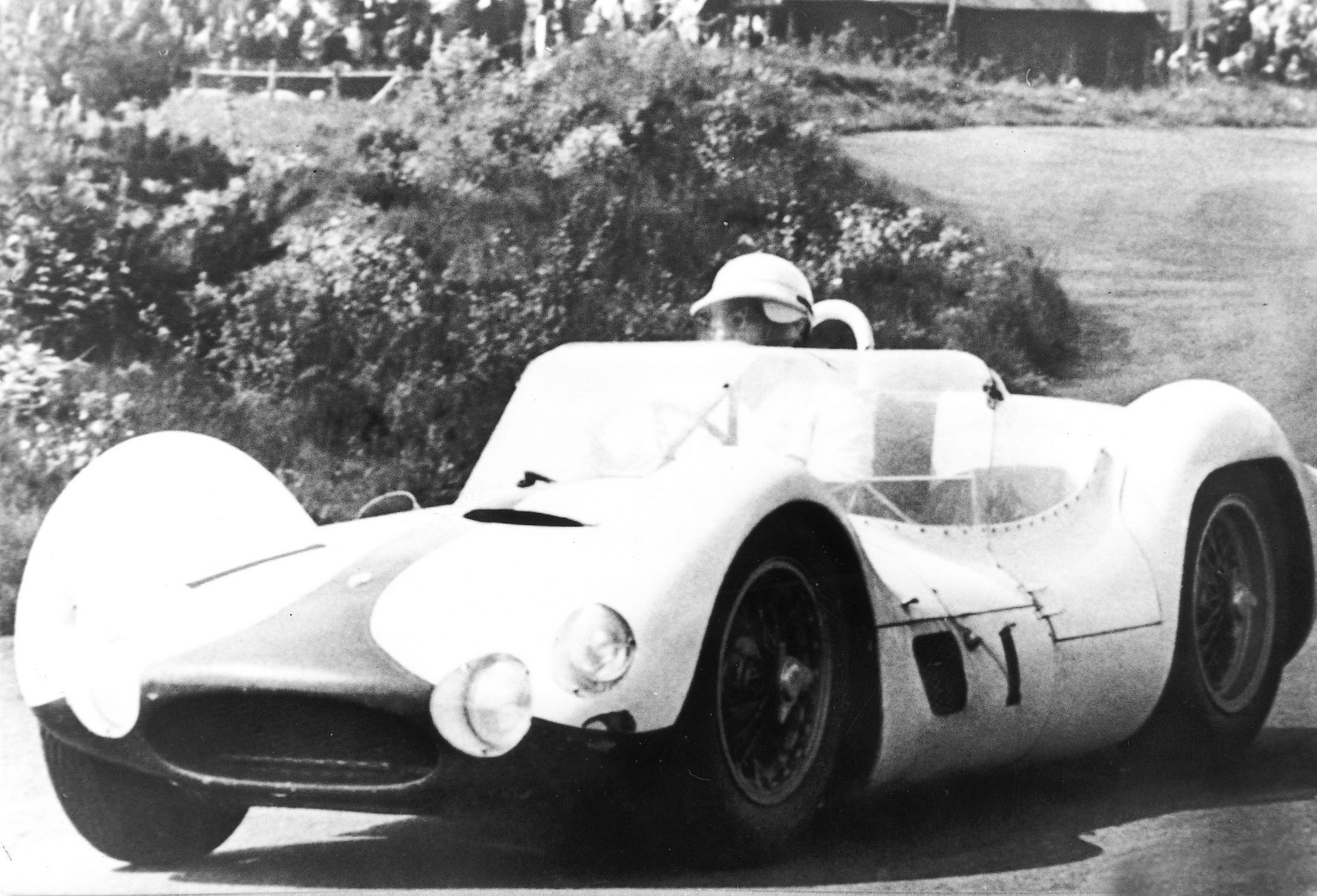Nowadays, the Tipo name may be associated with a Fiat compact model built in Turkey, but in the past it was used in the designation of a number of Italian racers, including Maseratis.
The Maserati Tipo 61 competed in the seventh edition of the Nurburgring 1,000 km (621 miles) in 1961 and crossed the finish line in first place. Masten Gregory and Lloyd Casner put it through its paces at the classic endurance race one year after the memorable victory of Stirling Moss and Dan Gurney.
Also Read: Maserati Celebrates 95 Years In Motorsport With F Tributo Special Editions
Finished in white and blue, the colors that would later be replicated on the Ferrari Enzo-based MC12 Stradale, the Tipo 61 was the best known of a series of five models designed by Giulio Alfieri. They featured an intricate ‘birdcage’ chassis, with around 200 tubes combined in an unusual way, which made them lighter and more rigid than other racers of the same era – and was also used as the nickname for the car.
An evolution of the Tipo 60 that was built in 1959, the Tipo 61 had a higher displacement engine, from 1,990 to 2,890 cc, and its output was increased from 200 to 250 HP at 7,000 rpm. Tipping the scales at 600 kg (1,323 lbs), it was only 30 kg (66 lbs) heavier, and top speed went up by 15 km/h (9 mph), to 285 km/h (177 mph). These mods were mandatory for it to compete in the Le Mans 24 Hours race.
Maserati says that the Tipo 60 and 61 “reigned supreme on the international racing scene, with power and speed that led to a series of extraordinary wins”. The “victorious tradition” will be continued with the new MC20 supercar, as the company “is once again planning a future in motorsports”.







